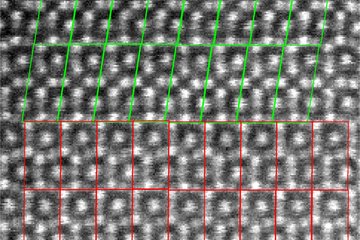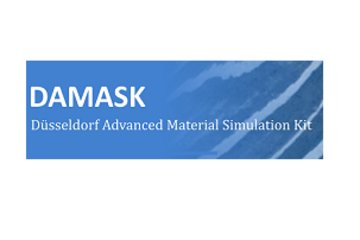All genres
21.
Talk
Höherfeste und supraduktile Leichtbaustähle auf der Basis Fe-Mn(Al, Si, C). Workshop Panzerstahl des Wehrwissenschaftlichen Instituts der Bundeswehr, Erding, Germany (2007)
22.
Talk
Struktur und Eigenschaften von Titanaluminiden (TiAl) - Leichtbaulegierungen für High Performance Motorkomponenten. Clauthal Industriekolloquium Sonderforschungsbereich 675, Clausthal (2007)
23.
Talk
Entwicklung und Eigenschaften ultrahochfester und supraduktiler Stähle für den Fahrzeugbau. Clausthal Industriekolloquium Sonderforschungsbereich 675, Clausthal (2007)
24.
Talk
Mechanical properties of macroalloyed single phase Fe3Al base alloys of D03 order. EUROMAT 2007, Nürnberg, Germany (2007)
25.
Talk
Mechanical Properties and Corrosion Behaviour of Ferritic Stainless Al Cr Steels. EUROMAT 2007, European Congress and Exhibition an Advanced Materials and Processes, Nürnberg, Germany (2007)
26.
Talk
Mechanical properties and deformation mechanism of high-strength lightweight MnAlC triplex steels. EUROMAT 2007, Nürnberg, Germany (2007)
27.
Talk
Corrosion and passivity of FeAlCr light weight steels. 58th Annual Meeting of the International Society of Electrochemistry, Banff, Canada (2007)
28.
Talk
Properties of refractory NiAl(Cr, Mo, Re) alloys in relation to atomic defects and microstructures. TMS 2007 Annual Meeting, Orlando, FL, USA (2007)
29.
Talk
Properties of refractory NiAl-(Cr, Mo, Re) alloys in relation to Atomic Defects and Microstructures. High Temperature Materials Chemistry, Wien, Austria (2006)
30.
Talk
Ferritic Stainless Lightweight Fe-Al-Cr-Steels. IOM MATERIALS CONGRESS 2006, London, UK (2006)
31.
Talk
Hochtemperatur-Leichtbauwerkstoffe auf der Basis intermetallischer Phasen. Metallographie-Tagung, Bochum, Germany (2004)
32.
Talk
Intermetallic NiAl alloy composites for nonpoluting power conversion. Materials Week 2000, München, Germany (2000)
33.
Poster
Metallphysikalische Verformungsmechanismen hoch manganhaltiger austenitischer Stähle. Materialographie 2008 - 42. Metallographie-Tagung, Jena, Germany (2008)
34.
Poster
Mechanical properties of high carbon lightweight Mn-Al-Si TRIP/TWIP steels. EUROMAT 2007, Nürnberg, Germany (2007)
35.
Poster
Effect of multiaxial stress states on the stress-strain behaviour of deep drawing steels. Euromat 2007, Nürnberg, Germany (2007)
36.
Thesis - PhD
Mikrostrukturen und Eigenschaften quasibinärer eutektischer NiAl-Re und NiAl-(Ti,Zr,Hf)B2-Legierungen für den Hochtemperatureinsatz. Dissertation, RWTH Aachen, Aachen, Germany (2006)











